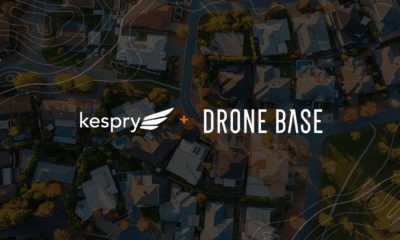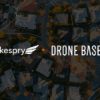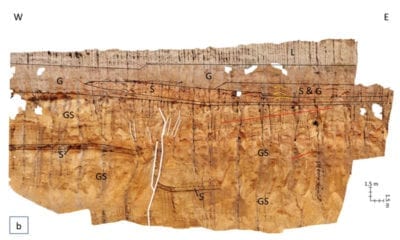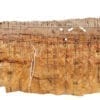
Construction & Mining
Using Drones to Inspect Solar Panels
For many, photovoltaic technology is just another word in the dictionary that they cannot explain. However, for a group of drone researchers, it is the name of their paper – as one of the most hoped solutions that can be faced to worldwide energetic challenges.
Sustainable, clean and eco-friendly, this form of technology is defined as “a method for generating electric power by using solar cells to convert energy from the sun into a flow of electrons by the photovoltaic effect.”
If you are now wondering how this technology is linked to unmanned aerial vehicles (UAVs), the truth is that they are used in various inspection fields and currently, they are increasingly used in the inspection field that focuses on the use of thermal and visual imagery taken by UAV in the inspection of photovoltaic installations.
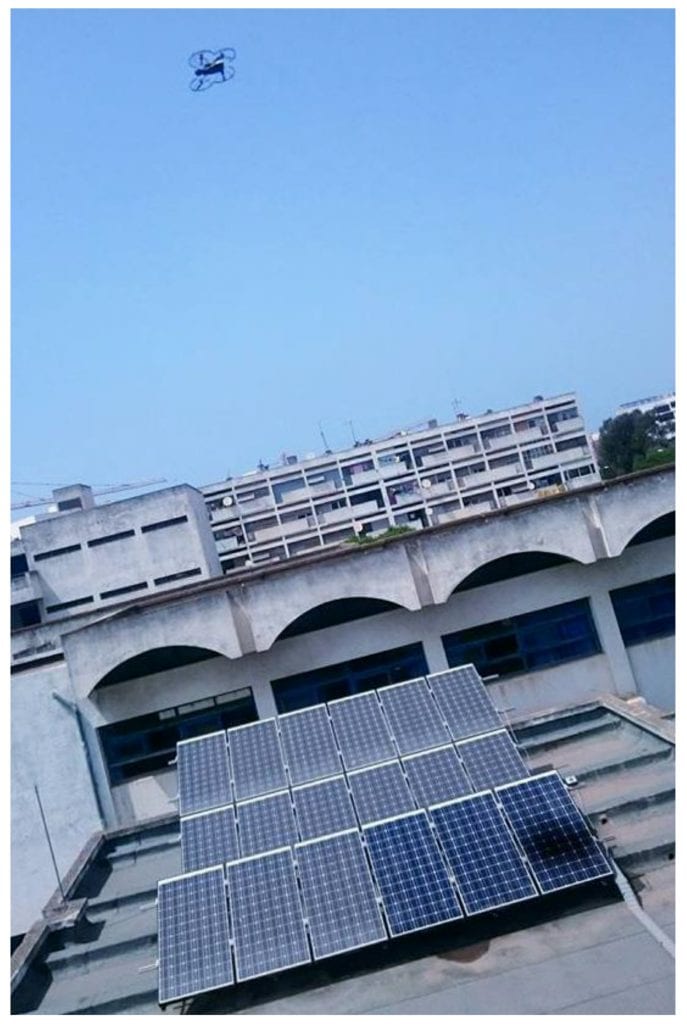
A photo from the mission.
Obtaining Visual and Thermal Images of Photovoltaic Modules
In order to prove that, a group of authors exploited visual and thermal images of photovoltaic modules, obtained by UAV from different installations (and with different acquisition conditions and parameters) – in order to generate orthomosaics for inspection purposes.
The authors have seen this technology as “promising” solution to exploit solar energy – mostly because of its ability to convert sunlight directly into electricity using the photoelectric effect and move mechanical parts or undesirable waste production. They propose a methodology for PV installations and their inspection using RGB and thermal infrared imagery taken by UAVs.
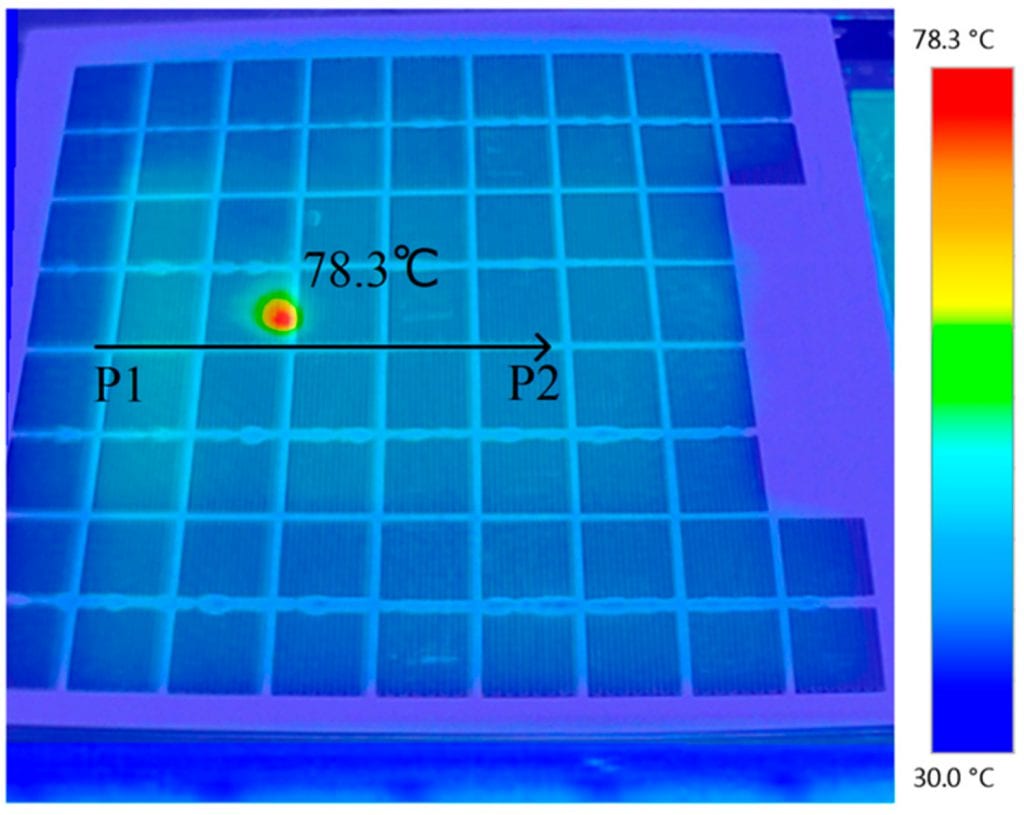
Observed hotspot on a thermal image of a PV module

Cracks in PV cells
PV Technology
In the fist part, the researchers are briefly overviewing the photovoltaics as a technolgy and their ability to operate by producing direct electric current from the absorption of photons. As they state in the paper:
“Rather than being used individually, PV cells are often assembled and encapsulated to form modules. A typical PV module layout comprises six strips, each one with 10 cells [7]. PV cells are made of semi-conductors. In this respect, many materials can be used, such as silicon, germanium, cadmium telluride, gallium arsenide, copper indium deselenide, etc. The first one is the most used because of its great abundance in the Earth’s crust.”
They are also pointing to the defects and mismatches of the technology, as well as cracks as one of the most frequent defects that affect them. Soiling, delaminations , snail trails and many other things are also considered.
Proposing UAVs for PV Inspection
In times when conventional inspection techniques ar time consuming and expensive to implement, the researchers of this paper propose visual and thermal inspections by aerial cameras, which saves time and human resources while allowing a massive coverage, fast data collection and inspection of hard-to-reach installations.
According to them, the use of UAVs efficiently can reduce up to 85% of the time spent performing thermographic inspection in large photovoltaic plants. Even though they require the respect of a list of conditions, they are revolutionary and just right when it comes to many factors and measurements.
As the data processing and exploitation show in many aspects of the paper, the use of UAVs for PV inspection has been proven effective – especially when it comes to visual inspection. On the basis of what they previously presented, variou results and conclusions have been obtained – developing the discussion on a practical aspect for different scale installations as well as some general aspects related to inspection operations.
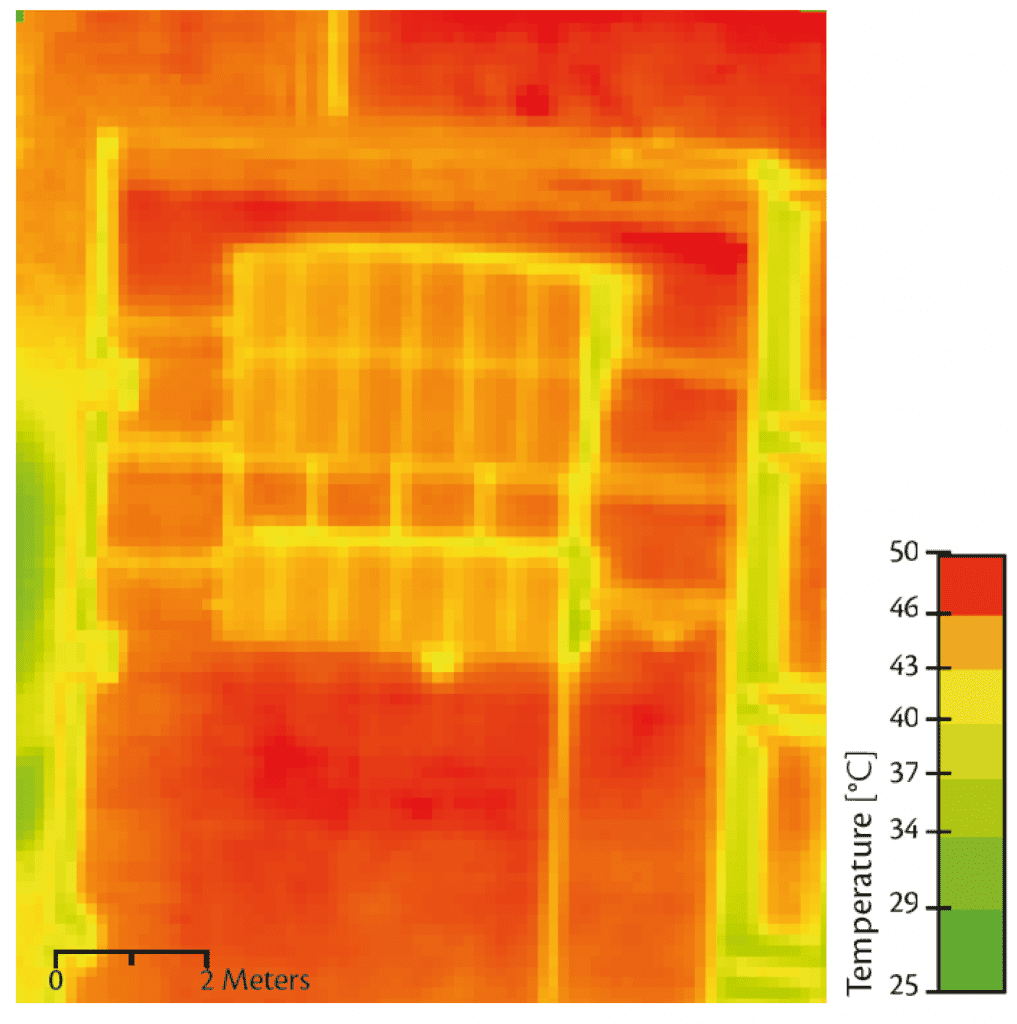
Thermal orthomosaic
Final Conclusions and Recommendations
As the work presented in the paper shows, thermal and visual images with different acquisition parameters and conditions were used to inspect three PV installations. Present defects have been detected and validated and on the basis of what has been seen, practical aspects of PV inspection are also possible and discussed.
The authors have concluded the following:
“Efficient aerial defects detection requires the use of high specifications airborne cameras, as most of defects occur at a centimetric or millimetric level, and that constitutes a challenge to actual available sensors. UAV have proved their value and efficiency in PV inspection. However, the use of UAV technology still cannot replace definitely conventional methods.”
For further development, they recommend testing other processing software platforms, performing tests with RGB and thermal cameras as well as using RTK surveys for precise geo-localization of present defects.
Citation: Thermal Infrared and Visual Inspection of Photovoltaic Installations by UAV Photogrammetry—Application Case: Morocco, Yahya Zefri, Achraf ElKettani, Imane Sebari and Sara Ait Lamallam, Drones 2018, 2(4), 41; https://doi.org/10.3390/drones2040041









